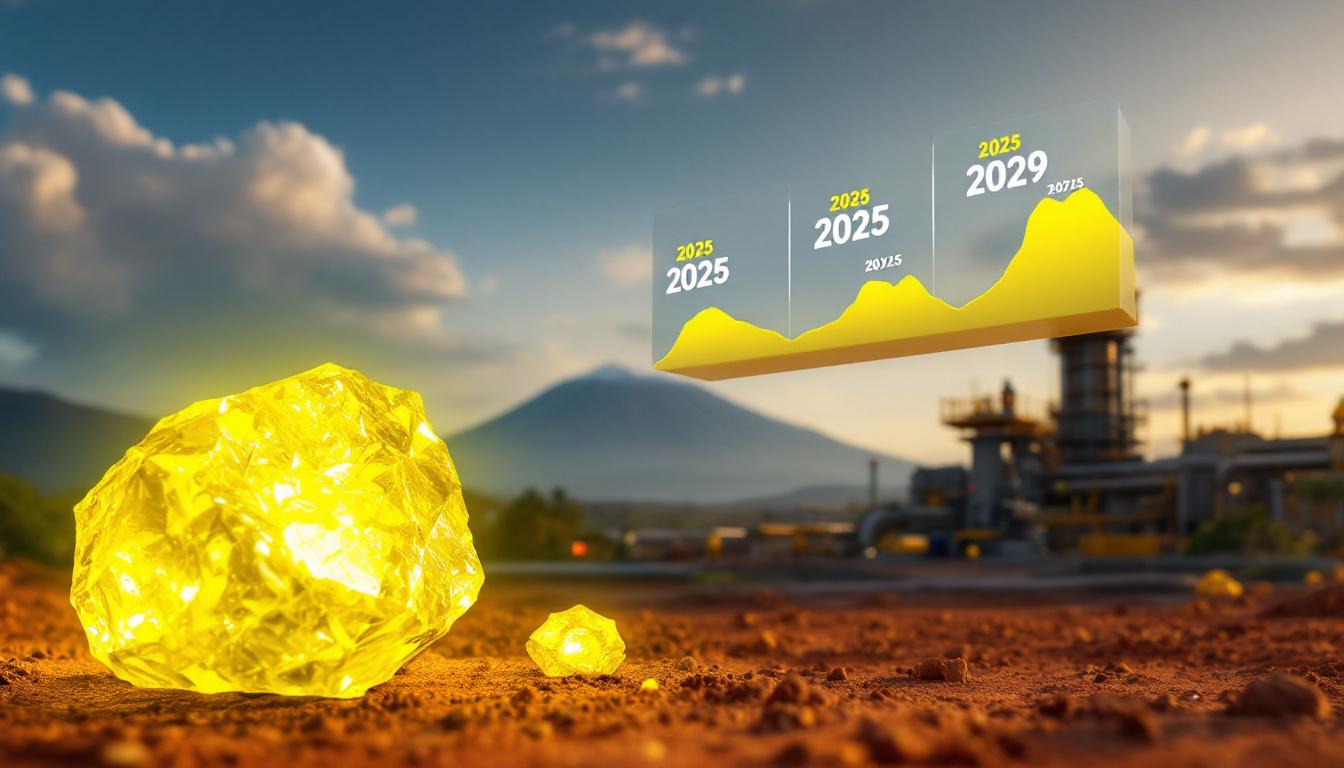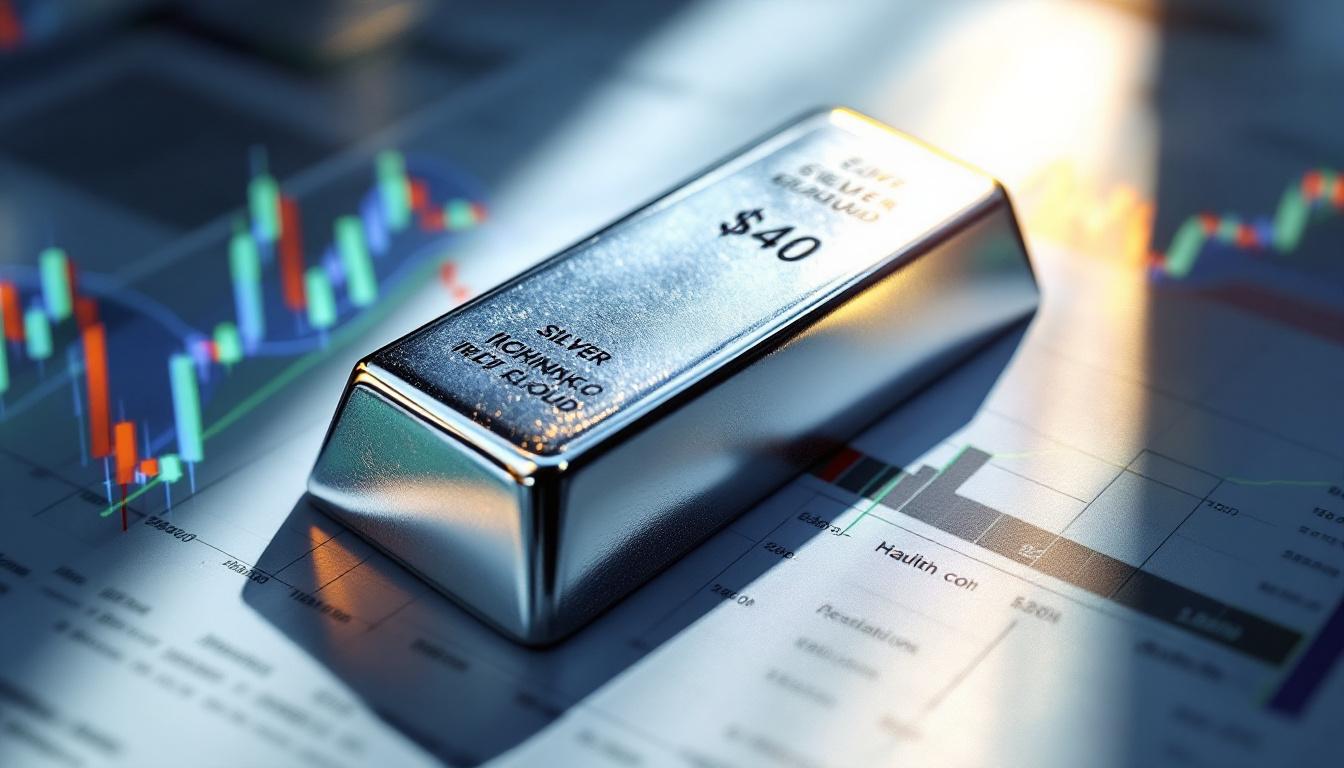Gold's Evolving Status: Strategic Asset or Critical Mineral?
The global perception of gold is undergoing a profound transformation. Once primarily viewed as an investment hedge since countries abandoned the gold standard in the 1970s, gold now stands at a crossroads, potentially gaining recognition as a strategic resource with critical mineral status. This shift reflects deeper changes in the global economic landscape and how nations view financial security in uncertain times. The possibility that gold and its miners may enjoy a critical mineral upgrade represents a fundamental reassessment of this precious metal's role in the world economy.
What is Driving Gold's New Status in Global Markets?
The Shifting Perception of Gold Beyond Investment
Gold's traditional role as a safe-haven asset is expanding into something more fundamental to national interests. Recent geopolitical and economic developments have prompted governments and investors to reevaluate gold's strategic importance within the global financial system.
The transition extends beyond gold's conventional application as a record high inflation hedge. As one senior monetary policy advisor noted, "We're witnessing the reemergence of gold as a strategic national asset rather than merely a portfolio diversifier."
The metal's inherent properties—scarcity, durability, and universal recognition—position it uniquely during periods of geopolitical tension. Unlike digital assets or fiat currencies, gold operates outside the constraints of any single nation's monetary policy.
Global Economic Uncertainties Creating New Demand
Recent political transitions, particularly in the United States, have triggered widespread concern about fiscal policies, trade relations, and the stability of traditional reserve assets. As trust in conventional financial instruments wavers, gold has stepped into the spotlight as a dependable alternative.
The return of Donald Trump to the US presidency has led to a global reassessment of US assets' relative safety, Federal Reserve independence, and the likely worsening of the US fiscal position. Trump's challenges to established institutions and potential trade policy disruptions have set the stage for gold's reevaluation as a strategic asset.
"The fundamental appeal of gold lies in its independence from government control—a characteristic becoming increasingly valuable as political uncertainty rises globally," explained a World Gold Council representative.
This uncertainty has created a perfect environment for gold's renaissance as more than just a precious metal—it's becoming recognized as a strategic resource critical to economic sovereignty.
How Are Central Banks Responding to Gold's Changing Status?
Record Central Bank Acquisitions
Central banks worldwide are voting with their vaults. According to a World Gold Council survey, an unprecedented 95% of central banks expect to increase their gold holdings in the coming year—a 17% increase from previous findings and the highest level since tracking began in 2019.
This surge reflects deep-seated concerns about the future of traditional reserve assets and the stability of the international monetary system. Central banks are particularly focused on reducing exposure to assets that could be affected by geopolitical tensions.
The acquisition trend spans both developed and emerging economies:
- Emerging markets: Increasing reserves to reduce dollar dependency
- Developed economies: Rebalancing portfolios for greater stability
- BRICS nations: Coordinating gold purchases as part of de-dollarization efforts
The scale of these purchases represents a structural shift in central bank thinking rather than cyclical portfolio adjustments.
Strategic Repatriation Movements
Beyond buying more gold, central banks are increasingly moving existing gold reserves from foreign storage facilities back to their home countries. This repatriation trend serves as a further sign of waning confidence in US assets and concerns about the policies of the Trump administration.
The movement involves significant logistical challenges but reflects a growing desire for direct physical control over national gold reserves. Countries that previously felt comfortable with gold stored in London, New York, or Switzerland now prioritize domestic storage even at higher costs.
Notable examples include:
- Germany completing its multi-year program to bring home gold stored in the US
- Poland accelerating its repatriation program from the Bank of England
- Several Southeast Asian nations constructing new high-security storage facilities
This repatriation movement represents a fundamental reassessment of sovereign risk and asset security priorities that has accelerated dramatically since 2024.
What Economic Factors Are Boosting Gold's Value?
Price Performance and Market Dynamics
Gold's price trajectory tells a compelling story of its changing status. The metal has experienced remarkable appreciation, gaining 32.3% from $2,536.71 per ounce in November 2024 to all‐time highs analysis showing peaks of $3,500.05 in April 2025. Though prices have moderated slightly to $3,357.08, the overall trend remains strongly positive.
This performance reflects a perfect storm of favorable conditions:
- Persistent inflation concerns despite central bank rate hikes
- Geopolitical tensions creating flight-to-safety demand
- Currency debasement fears following extensive monetary stimulus
- Supply constraints from major producing regions
The price movement has been notably steady rather than volatile, suggesting structural rather than speculative buying underpins the rise.
Alternatives to Traditional Reserve Assets
As confidence in US Treasuries and other conventional reserve assets wanes, gold has emerged as one of the few viable alternatives for governments, fund managers, and private investors seeking stability outside the US dollar ecosystem.
The diminishing appeal of traditional safe-haven assets stems from:
- Unsustainable debt trajectories in major economies
- Declining faith in institutional independence
- Growing concerns about asset freezes and sanctions
- The search for neutral assets in an increasingly multipolar world
These factors have elevated gold from a simple portfolio diversifier to an essential component of financial security planning. Its physical nature and millennia-long history of value preservation provide reassurance during periods of systemic uncertainty.
"When everything else becomes politicized, gold's neutrality becomes its greatest strength," observed a prominent hedge fund manager.
The metal's finite supply contrasts sharply with the seemingly unlimited expansion of government debt, further enhancing its appeal as central banks worldwide question the wisdom of excessive exposure to any single nation's liabilities.
How Are Gold Mining Companies Benefiting from This Trend?
Outperforming the Metal Itself
While physical gold has delivered impressive returns, gold mining equities have performed even more spectacularly. Major producers have seen their share prices rise significantly faster than the physical metal:
- Newmont: 63% increase since December 2024
- Barrick Mining: 40.6% gain in US dollar terms since December 2024
- AngloGold Ashanti: 108% surge since December 2024
- Gold Fields: 88% increase in US dollar terms since November 2024
This outperformance represents a significant shift from historical patterns where mining stocks often lagged bullion during bull markets. The current dynamic suggests investors recognize the unique opportunity undervalued mining stocks present in the evolving gold landscape.
Factors Driving Mining Stock Performance
Several complementary factors explain the exceptional performance of gold mining equities:
Operational leverage: Higher gold prices flow directly to miners' bottom lines after fixed costs are covered, amplifying profitability. For many producers, each $100 increase in gold prices translates to 15-20% higher free cash flow.
Dividend expectations: As cash flows improve, investors anticipate higher dividend payouts. Many major producers have implemented progressive dividend policies linked to gold price movements.
Capital discipline: Unlike previous bull markets, today's mining executives emphasize return on investment rather than production growth at any cost. This disciplined approach has won investor confidence.
Supply constraints: Limited new project development creates favorable supply dynamics. With few major new mines coming online, existing producers benefit from scarcity premiums.
Strategic reassessment: As gold's status evolves, mining companies themselves are increasingly viewed as strategic assets worthy of premium valuations.
The combination of these factors has created a powerful investment case for gold equities beyond simple exposure to the metal price.
Could Gold Achieve Critical Mineral Classification?
Defining Critical Minerals Status
The concept of "critical minerals" typically encompasses materials essential for economic security, manufacturing competitiveness, and national defense. Unlike traditional critical minerals such as rare earths, lithium, and copper that are vital components in advanced manufacturing, gold's potential classification would be based on its strategic economic importance rather than industrial applications.
This represents a significant conceptual shift in how resources are categorized. Traditional critical mineral designations focus on:
- Supply chain vulnerability
- Lack of substitutability
- Essential role in strategic industries
- Limited geographical distribution
Gold meets some but not all of these criteria. However, its unique role in the global financial system creates a compelling case for a broader definition of "critical" that encompasses monetary and financial stability considerations.
Strategic Importance in Global Finance
Gold's role in maintaining financial stability during periods of geopolitical tension and economic uncertainty positions it as a potentially critical resource for national security and economic resilience.
The metal serves several irreplaceable functions in the global financial architecture:
- Reserve asset: Central banks hold gold as a foundational reserve asset independent of any currency
- Crisis hedge: During periods of financial instability, gold provides liquidity when other markets freeze
- Monetary anchor: Gold serves as an implicit anchor even in a fiat currency world
- Sovereignty symbol: Control over gold reserves represents financial independence
These functions elevate gold beyond commodity status to a strategic resource essential for economic security—particularly for nations seeking greater independence from dollar-dominated financial systems.
"The definition of 'critical' must evolve beyond industrial applications to recognize resources essential for financial sovereignty and economic security," argues a former treasury official.
This conceptual shift could have profound implications for how governments approach gold mining, refining, storage, and trading in the years ahead. As a recent World Economic Forum report highlights, the categorization of critical minerals is evolving to address broader economic security concerns.
What Are the Implications for Investors and Governments?
Portfolio Allocation Strategies
If gold and its miners may enjoy a critical mineral upgrade, investors may need to reconsider traditional portfolio allocations. The conventional wisdom of a 5-10% gold allocation could prove insufficient in a world where the metal plays an expanded role in the global financial system.
Sophisticated investors are already adapting their strategies:
- Increased allocations: Moving beyond token positions to substantial holdings
- Mining exposure: Adding gold equities for operational leverage to price movements
- Strategic positioning: Viewing gold as a core holding rather than a tactical trade
- Geographical diversification: Spreading mining investments across multiple jurisdictions
The evolving landscape suggests a portfolio approach that distinguishes between gold's multiple roles—as inflation hedge, crisis insurance, and strategic asset. Understanding the gold stock market guide relationship becomes increasingly important for investors navigating this changing environment.
Mining Project Development Incentives
Governments might implement policies to encourage domestic gold production and processing, similar to initiatives currently in place for other critical minerals. These could include:
- Tax incentives for exploration and development
- Streamlined permitting for projects deemed strategically important
- Research funding for more efficient extraction and refining technologies
- Strategic reserves building through domestic production preferences
Countries with significant undeveloped gold resources may reassess their value through this new strategic lens. Nations that previously focused on other minerals may allocate more resources to understanding their gold potential.
The environmental considerations around gold mining remain important but may be balanced against strategic imperatives in a way that encourages more sustainable extraction practices rather than outright restrictions.
For mining companies, this shift could create a more favorable regulatory environment in jurisdictions previously hesitant to approve new projects. The designation of gold as strategically important could help overcome some of the permitting challenges that have constrained supply growth.
FAQ: Gold's Evolving Status in Global Markets
Why is gold being reconsidered as a critical mineral now?
Recent geopolitical tensions, concerns about fiscal policies in major economies, and questions about the stability of traditional reserve assets have prompted a reevaluation of gold's strategic importance. The return of Donald Trump to the US presidency has accelerated this reassessment as governments and investors question the future stability of US assets and dollar dominance.
This timing coincides with broader efforts to secure supply chains for strategic resources, creating a natural opportunity to reconsider how gold fits into national security frameworks.
How does gold compare to other critical minerals?
Unlike traditional critical minerals valued primarily for their industrial applications, gold's potential critical status stems from its role in financial stability, wealth preservation, and as an alternative to conventional reserve assets during periods of uncertainty.
While rare earths, lithium, and copper are essential for manufacturing specific products, gold serves a foundational role in the global financial architecture. This distinction requires a more nuanced approach to classification that recognizes both physical and financial dimensions of resource criticality.
What does this mean for gold prices in the future?
While short-term price movements remain subject to market volatility, the structural shift in how gold is perceived suggests potential for sustained long-term demand. As central banks, sovereign wealth funds, and institutional investors increase allocations, this creates a solid foundation for price support.
The limited supply of new gold—annual mine production adds only about 1.5% to existing stocks—means even modest increases in strategic demand can have significant price implications over time. Recent technical market analysis confirms this bullish long-term outlook.
How might mining companies adapt to gold's changing status?
Gold producers may increasingly position themselves as strategic partners to governments, emphasizing their role in national security and financial stability. This could lead to:
- More collaborative approaches to project development
- Greater emphasis on domestic processing capabilities
- Attention to environmental and social governance to align with national priorities
- Investment in secure supply chains from mine to vault
Companies that successfully navigate this transition could benefit from more favorable regulatory treatment and premium valuations that reflect their strategic importance beyond simple commodity production.
The Future of Gold in a Changing World Order
As global financial architecture evolves, gold's role appears set for a renaissance that transcends its traditional investment functions. The potential reclassification as a critical mineral represents more than semantic change—it signals a fundamental reassessment of what constitutes strategic resources in an uncertain world.
For investors, this evolution suggests the need for a more nuanced approach to gold exposure that considers both the metal itself and the companies that produce it. For governments, it highlights the importance of secure access to gold as part of broader economic security planning.
While the future remains uncertain, one thing appears increasingly clear: gold's status as merely a commodity or simple inflation hedge is giving way to recognition of its enduring importance in the global financial system—a role that may soon be formally acknowledged through critical mineral designation. As Reuters recently reported, the possibility that gold and its miners may enjoy a critical mineral upgrade could reshape the entire sector for decades to come.
Disclaimer: This article contains forward-looking statements and analysis regarding gold markets and potential regulatory changes. These perspectives are speculative and should not be construed as investment advice. Investors should conduct their own research and consult qualified financial advisors before making investment decisions.
Ready to Capitalise on Gold's Changing Status?
Discover the investment opportunities emerging from gold's potential reclassification as a critical mineral with real-time alerts from Discovery Alert's proprietary Discovery IQ model. Visit the discoveries page to understand how major mineral discoveries have historically generated substantial returns for early investors.




